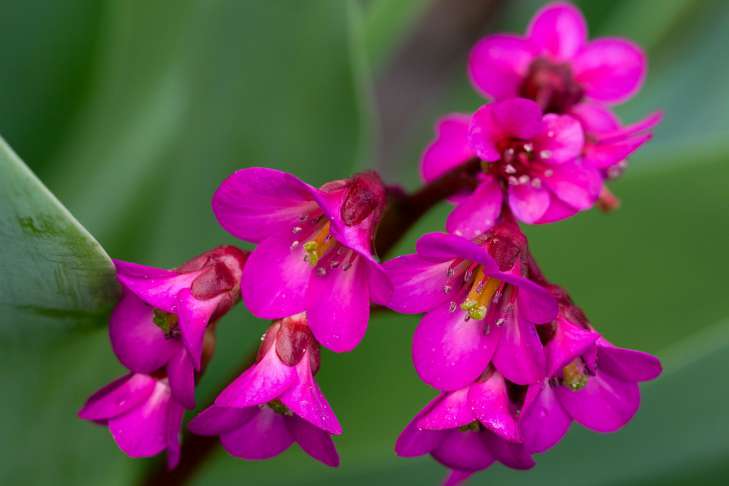The flowers are lilac, collected in dense bell-shaped inflorescences.
They are divided in the middle into rounded petals.
The plant blooms very early, flowering lasts about two months.
What bergenia doesn’t like
In nature, bergenias are found on rocky soil, in rock cracks, and grow well in the sun and shade.
Ordinary garden soil with a slightly alkaline reaction is suitable for them.

In addition, thick-leaved bergenia feels great even on clay and sandy loam.
The only thing to avoid is overwatering.
Do I need to prune the bergenia
Head dieback pruning is best done in late spring or when only a few flowers have faded.
If brown or yellow leaves are found, they should always be trimmed.
Throughout the plant's growth period, pay close attention to any diseased leaves and remove them as necessary.
When to collect bergenia
Rhizomes are collected in autumn, spring or the first half of summer.
Clear of soil and small roots. The peeled rhizome, slightly withered in the shade in the open air, is cut into pieces and laid out in a thin layer on paper.
It is best to dry the rhizomes under a canopy and then dry them in an oven or drying cabinet.









